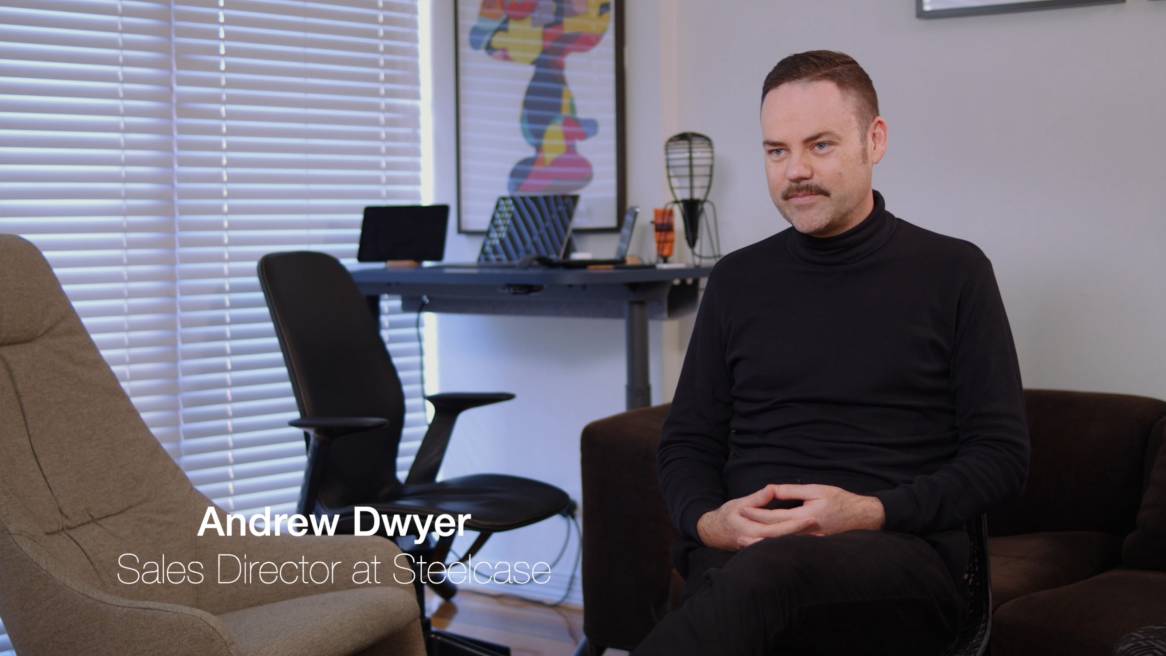Chapter 2 The Home: New Rituals and Tools
The way we work is changing. This 3 part series traces the experience of Melbourne and its city dwellers across 3 contexts: Melbourne the city, the home, and the office. This second chapter, “The Home,” follows the experiences of 3 Melburnians working from home, new hybrid work rituals, and their thoughts on the future of work. Find out more about Steelcase’s latest thinking on the hybrid future of work. To read chapter 1 of this series, visit here, or jump to “The Office” chapter for a glimpse into an office of the future.
Like many places around the world, the Melbourne work from home experience has been varied and diverse. Regardless of each individual situation,challenges quickly became apparent: those living by themselves felt isolated and disconnected from community; and people living with family members or housemates suddenly found themselves struggling to carve out a work space where they could focus and feel productive. With work from home continuing to remain a broad experience inside the pandemic paradigm, people have also discovered benefits to this new situation, developed new work rituals, and accelerated the adoption of tools that support a hybrid way of working. As understanding of the challenges, benefits, and new work rituals arising from work from home continues to crystallise, companies and organisations will have access to more information on how they can improve their work experiences and build resilient, future-proof workplaces ready for hybrid collaboration.
Centered productivity
With flexible and activity-based working more broadly accepted in Australia and cities like Melbourne, work from home was not an entirely new experience. As Andrew Dwyer, Sales Director at Steelcase Melbourne describes, “it was more the necessity” of having to work from home that proved to be part of the initial challenge. Settling into the new work from home paradigm, Dwyer highlights “dealing with loneliness and not seeing people” as other key challenges in his experience. Indeed, sense of isolation is one of the top challenges surfaced in Steelcase’s recent Global Report on the Changing Expectations and the Future of Work, which surveyed over 32,000 people across 10 countries. While work from home has been an adjustment, Dwyer considers himself fortunate to have a dedicated work area. “The ability to have a place in the home that is your center for work that you can raise and lower, stand and sit at was really advantageous in aiding my productivity.”
Evolving home spaces
For Carlos Hernandez, General Manager at Flex Melbourne, Market Lane, work from home was a new and challenging experience. Living in a shared house with other flatmates proved to be both a benefit (companionship) and a challenge — not having enough proper locations in the home to work effectively. “My home office setup has evolved from the beginning because it all happened so quickly,” recounts Hernandez. “I started working from the living room, had no work chair, just my dining table and quickly realized it wasn’t beneficial for my work.” As time wore on, Hernandez made the decision to acquire some basic ergonomic furniture that would help to create another work zone in his home environment and give he and his roommates the chance to segregate their work from home experiences. “I’ve been lucky enough to be working on a couple of projects with the Steeclase team,” says Hernandez, “they were kind enough to provide me with a workstation that was height-adjustable and an ergonomic chair as well.”
Wellbeing rituals and collaborative tools
What new work rituals and tools have Melburnians and others discovered working from home? For Rebecca Daff, National Practise Leader at design and architecture studio Peckvonhartel, the shift into the home came with challenges and discovery. “It became apparent that COVID brought on a much stronger connection to the studios, because we started to engage on Zoom everyday,” says Daff. “Through Zoom we could draw together. Everyday we would continuously be bringing up drawings on screen together.” Virtual tools, like Zoom, have become foundational in the experience of hybrid collaboration moments between co-located teams in offices and colleagues working from remote locations. Striving for balance between connecting with colleagues virtually and being a single mother to a seven year old son, Daff highlights the importance of reserving time in her day for wellbeing activities that bring a sense of calm. “Something I found that became really important to me was planting in my home. I realized that having biophilia and greenery around me was really important for my mental health, as well as visually and aesthetically.”
“We don’t know what the future of work is really going to hold for us,” muses Daff reflecting on the continued uncertainty that Melburnians and others around the world are facing during this time, “but we’re going to be working, and with working comes a whole lot of things that need to support that; a whole lot of tools. And critical to those tools are seamless technology wherever we work, whether it’s in the office, whether it’s in a space where people just connect, whether it’s in our home. We also need furniture that actually works with the kind of things that we need to be doing for work, so it supports all the activities that we’re doing; furniture that is agile, furniture that can move and be what we need it to be, furniture that supports all of the different types of work that we do throughout the day.”
Continue to Chapter 3 to watch and read about our work with the “non-office, office,” Market Lane.


